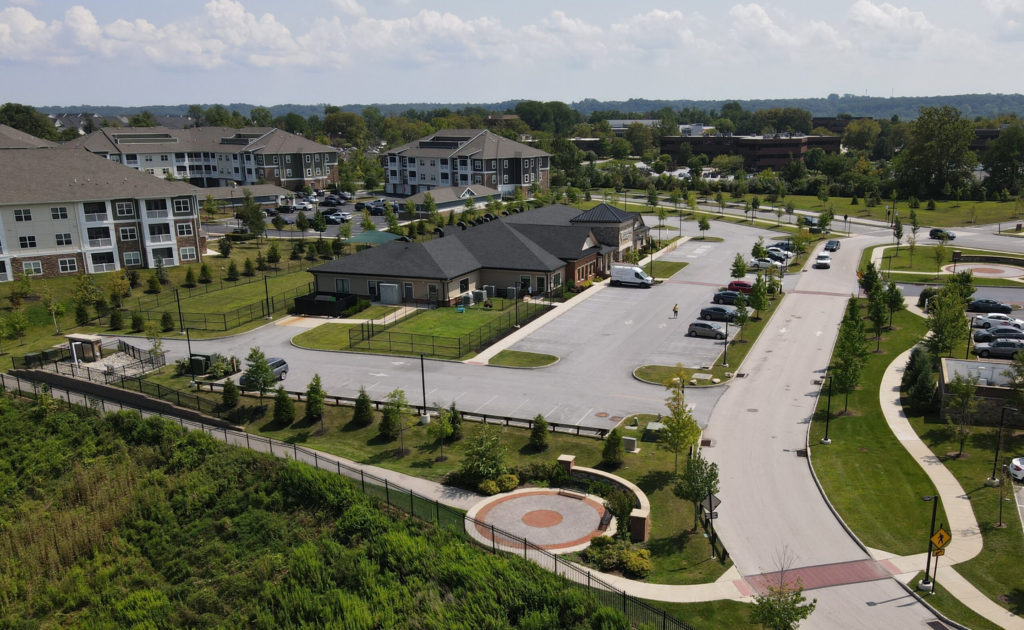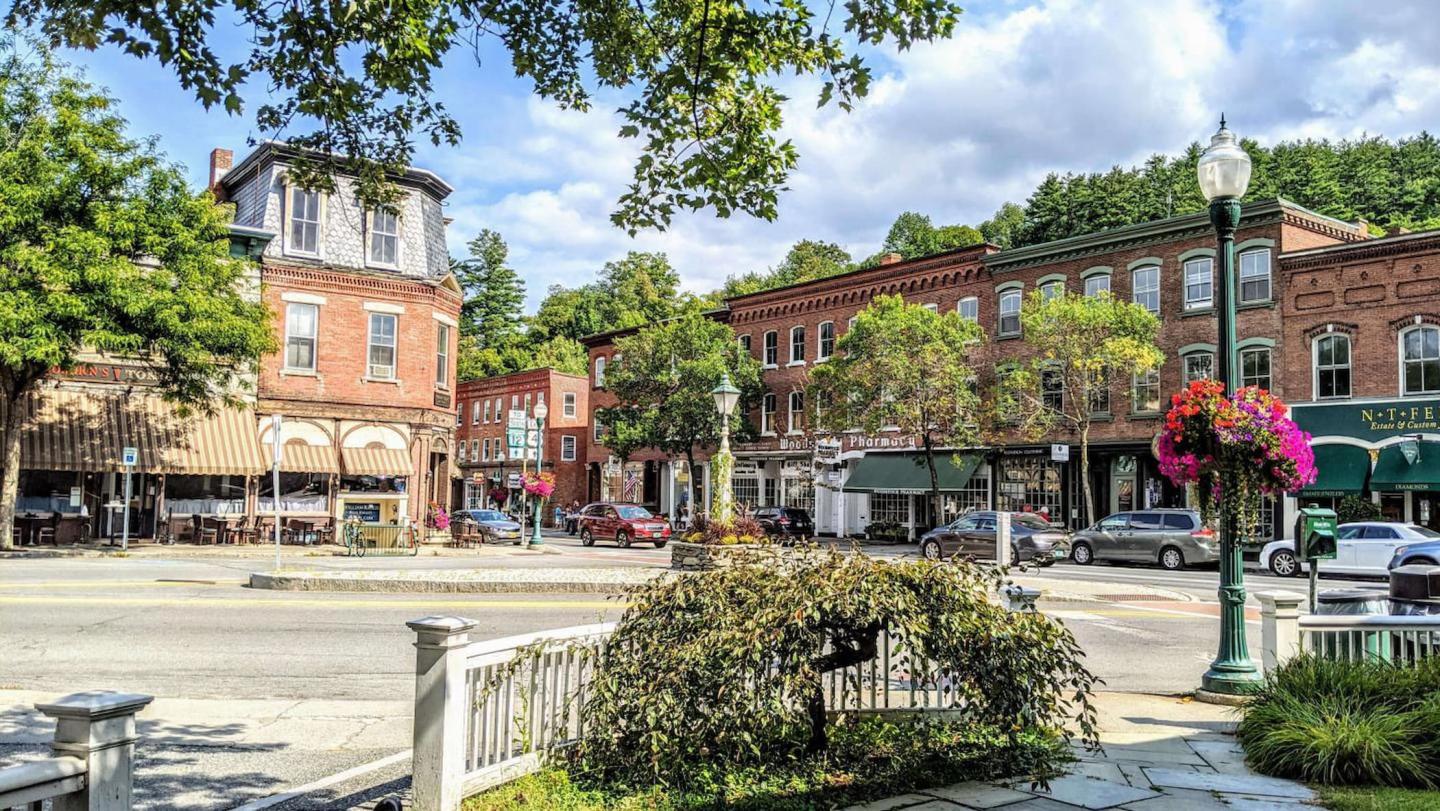The U.S. is as diverse as it is big. Here, you’ll find big cities, quaint beach towns, clean suburban neighborhoods, and historic communities–all within a day’s drive of one another.
If you’re shopping for your first home, the list of decisions to make might seem endless. How much am I willing to spend on a home? How do I apply for a home loan? What architectural style do I like best? Is a Tudor or farmhouse-style home right for me? Not to mention, you’ll need to decide on the type of neighborhood you want to live in, too.
Suburban neighborhoods, urban neighborhoods, rural neighborhoods, and gated communities are just some of the options you’ll have to choose from. Each of these types of neighborhoods lends itself to a unique lifestyle, so you’ll want to keep your goals and aspirations (Do you want to raise a family?), along with your daily routine, in mind.
From the close-knit environment of a gated community to the vibrant energy of big-city living, here are six types of U.S. neighborhoods (with tips on how to decide which is right for you).
Type #1: Suburban Neighborhoods
Located on the outskirts of cities or towns, suburban neighborhoods promise a leisurely pace of life, perfect for families and young professionals. They often feature shopping centers, schools, ample green spaces, and parks.
Housing options may range from single-family homes to condos to apartments.
Pros
Suburbs often offer a sense of safety, spacious housing, and a quieter environment compared to urban areas. Good schools are also typically located in the suburbs, making these areas an excellent choice for young families.
Cons
Living in the suburbs without a car can be challenging. Access to public transportation may be limited, and commuting to urban centers can take a long time. Suburban neighborhoods may also lack diversity and cultural amenities.
Popular Suburban Neighborhoods

Image courtesy of PH&C (Pictured: Chesterbrook, Pennsylvania)
Type #2: Urban Neighborhoods
The allure of city life is undeniable for many. Urban neighborhoods boast diverse cultures, plenty of entertainment options, and a vibrant social scene. Usually, these areas are densely populated and appeal to young professionals, artists, and couples without children.
Housing options may include high-rise apartments, townhouses, brownstones, and mixed-use buildings.
Pros
Urban neighborhoods provide convenient access to public transportation, local entertainment (restaurants, cafes, and nightlife options), and a plethora of job opportunities.
Cons
Prices are higher in urban areas, and living spaces are smaller. Residents may find the noise bothersome, parking can be a nightmare, and crime rates may be higher than in suburban or rural areas.
Popular Urban Neighborhoods
- Williamsburg in Brooklyn, New York
- Capitol Hill in Seattle, Washington
- Wicker Park in Chicago, Illinois

Image courtesy of Compass Real Estate (Pictured Williamsburg in Brooklyn, NY)
Type #3: Rural Neighborhoods
Move to the countryside to enjoy wide-open spaces and a close-knit community. Rural neighborhoods offer a slow pace of life and spacious homes. These areas often have farms, ranches, or natural reserves nearby. Nature lovers and those seeking a quiet pace of life are particularly drawn to these areas.
Pros
Rural neighborhoods boast large lots, a low cost of living, and easy access to nature. Communities in these areas often revolve around a shared appreciation for simpler pleasures, and there’s a strong sense of camaraderie.
Cons
The countryside is not known for its plentiful amenities. These areas also have fewer job opportunities, and residents may feel lonely or isolated. Commuting to the nearest city center can be challenging, and public transportation is limited in these areas.
Popular Rural Neighborhoods

Image courtesy of Woodstock VT (Pictured Woodstock in Vermont)
Type #4: Gated Communities
Gated communities are private residential areas with heightened security. They often feature controlled-access entrances under surveillance, centralized security systems, and shared amenities like pools, gyms, and golf courses.
Homes in gated communities are usually well-maintained and luxurious and usually inhabited by affluent families and retirees.
Pros
Those looking for security and exclusivity will certainly find that within a gated community. The amenities, including the pools, parks, and tennis courts, also make these neighborhoods great for families.
Cons
Living in a gated community comes with a higher price tag. Aside from the higher home prices, residents of gated communities may also need to cover the cost of higher homeowner association fees. Additionally, these neighborhoods are rarely diverse, and residents may be restricted from altering the appearance of their homes or gardens.
Popular Gated Communities
- Silverleaf: Scottsdale Arizona
- Crystal Cove: Newport Beach, California
- Rarity Bay: Tellico Lake, Tennessee

Image courtesy of Trulia (Pictured: Silverleaf in Scottsdale Arizona)
Type #5: Historic Neighborhoods
Historic neighborhoods are like living museums. Here, you might find buildings well over a hundred years old that boast a variety of architectural styles, including Victorian, Colonial, Gothic Revival, and Art Deco. These areas are often overseen by local or national historic preservation organizations.
History lovers, artists, and those seeking a close-knit community are most drawn to these neighborhoods.
Pros
Historic neighborhoods are very aesthetically pleasing, with unique architecture. These areas are usually pedestrian-friendly and are often close to landmarks, museums, and entertainment districts.
Properties in these areas also hold their value well due to their historical significance.
Cons
Living in a historic neighborhood means abiding by any local preservation guidelines. This can make it harder, or even impossible, to modify homes. Historic homes also require specialized maintenance and upkeep and may lack some modern amenities.
Popular Historic Neighborhoods
- Beacon Hill in Boston, Massachusetts
- French Quarter in New Orleans, Louisiana
- Savannah Historic District in Georgia

Image courtesy of Old Town Trolley Tours (Pictured: Beacon Hill in Boston, Massachusetts)
Type #6: Transitional Neighborhoods
A transitional neighborhood is one that is currently undergoing changes in demographics and infrastructure.
The potential for transformation in these areas appeals to young professionals, artists, and those seeking more affordable living.
Pros
Transitional neighborhoods offer affordable housing that could grow in property value over time. These areas also attract diverse communities that can lead to a vibrant cultural scene. Local businesses often flourish here, as many prospective residents flock to the newness of these urban neighborhoods.
Cons
A neighborhood under constant change is also one where uncertainty looms. Gentrification could displace existing residents and cause prices to increase dramatically. A lack of essential services like public schools and healthcare facilities could also become a concern, especially when compared to neighborhoods in more established areas.
Popular Transitional Neighborhoods
- East Hollywood in Los Angeles, California
- Portland’s Alberta Arts District in Oregon
- Pilsen in Chicago, Illinois

Image courtesy of Homes.com (Pictured East Hollywood in Los Angeles, California)
Tips for Moving to a New Neighborhood
Moving to a new neighborhood can be intimidating. Your move may call for a lifestyle change, and it will certainly expose you to a new community. Here are some tips that might help you settle into your new neighborhood:
- Research Extensively: Even before you move to a new neighborhood, make sure you do thorough research first. Understand the area’s history, amenities, crime rates, school quality, local services, and community atmosphere. This will prepare you for your move and help you connect with the locals.
- Join Online Neighborhood Groups: Many neighborhoods have online forums and Facebook groups where residents interact, share information, and discuss local concerns. Join these groups to stay informed about the neighborhood and to get to know the locals.
- Attend Community Events: Participating in community events is another great way to connect with locals. Whether it’s a neighborhood block party, local festival, or community meeting, these gatherings offer great opportunities to meet new people.
- Budget Wisely: The cost of living in your new neighborhood may be different from that of your previous home. Pay attention to the prices of groceries and rent to make sure you’re spending your money appropriately.
- Downsize If Necessary: When moving to a new place, it’s a good idea to downsize. This not only helps you get a fresh start in a new place but also helps you save money on housing. If you have items that you’re attached to but don’t have room for in your new home, consider renting a storage unit or taking advantage of self-storage marketplaces like Neighbor.
If you plan on buying a house in your new neighborhood, here are some helpful links:
- The Ultimate Home Inspection Checklist for Buyers
- How to Make an Offer on a House: Your Step-by-Step Guide
- Condo vs. Townhouse: Your Ultimate Guide to Choosing the Right Home
- 10 Most Popular Types of Houses In America
- How to Afford a Down Payment on a House
- Mastering Lawn Mowing Etiquette: Tips to be a Good Neighbor
- New Neighbor Gift Ideas for a Warm Welcome to the Block
Summary
Once you’ve found the neighborhood of your dreams, you’re ready to start house (or apartment) hunting. Remember that this process can take months, even years. When shopping for the right home, always factor in the long-term appeal of a home. With an open mind and a clear understanding of your needs, your search will lead you to the perfect home.

